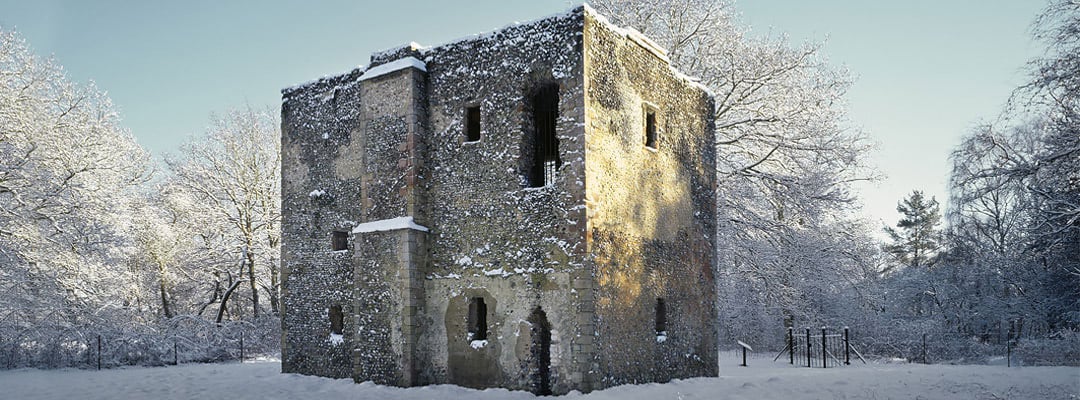Rabbits, Warreners and Thetford Warren Lodge
How a fine tower in a remote part of East Anglia reveals how highly medieval rabbit farms were valued.

A LONELY SPOT
‘As melancholy as a lodge in a warren’ – so Benedick describes Count Claudio in Shakespeare’s Much Ado About Nothing. He might have had Thetford Warren Lodge, Norfolk, in mind.
If not melancholy, the lodge is certainly isolated. You are unlikely to have much company when you visit, unless you’re there early in the morning or at dusk, when you might come across a few rabbits – a clue to this curious building’s origins.
In a distinctive area of East Anglia known as the Brecklands, just outside Thetford, it is one of the few surviving examples of a building type that was once common across England: a semi-fortified lodge for the keeper of a rabbit warren. With its many defensive features, it looks like a small castle. This one was built by the prior of nearby Thetford Priory.
A LUXURY BUSINESS
In the Middle Ages, if you wanted to invest in a luxury business, rabbits were a safe bet. Rabbit warrens or farms were an excellent way of gaining an income from poor, sandy or heath land.
Rabbits are not native to Britain. Their bones have been discovered on Roman sites in southern and eastern England, and we know that the Romans valued rabbits for both their fur and their meat. But they seem to have died out here after the Romans left – there is no Old English word for rabbit.
It was the Normans who reintroduced them in the late 11th or 12th century. Ill-adapted to the English climate and easy prey for native predators, rabbits (or coneys, as mature rabbits were then known) had to be kept in special areas or warrens – often walled or fenced to prevent them from escaping. Their rarity meant that their meat was prized as a delicacy, while their fur was used for trimming clothes. In the 13th century one rabbit was worth more than a workman’s daily wage.
WARREN WATCH
It is not surprising, then, that rabbit warrens were jealously guarded by warreners, whose job it was to look after the rabbits on their masters’ lands, giving them food, boring holes for burrows, and warding off predators – and poachers.
Thetford Warren Lodge, built about 1400, shows how seriously the threat was taken. Its walls are substantial, up to one metre thick at floor level. It had a parapet from which the warrener could look out over what was then open country. Its one entrance has a hole over the porch, which allowed the warrener to secure the door by lowering a board through it from the floor above.
The warrener and his family lived on the top floor, and used the ground floor for traps, nets, and racks on which to hang meat and dry skins.
RUNNING WILD
It wasn’t until the 18th century that rabbits began to be seen as a food for the poor, since by then they were ubiquitous in the wild.
Only in areas like the Brecklands and Dartmoor – where the dry sandy soil may have been poor for crops, but was ideal for burrowing – was land still given over to rabbit farming. The area surrounding Thetford Warren Lodge was one of the most productive rabbit warrens in the Brecklands all the way through until the early 20th century.
Today, large warrens can still be seen nearby at Grime's Graves and Weeting Heath. The extraordinary Rushton Triangular Lodge in Northamptonshire was also built as a warrener’s lodge in the late 16th century.
By Katy Carter